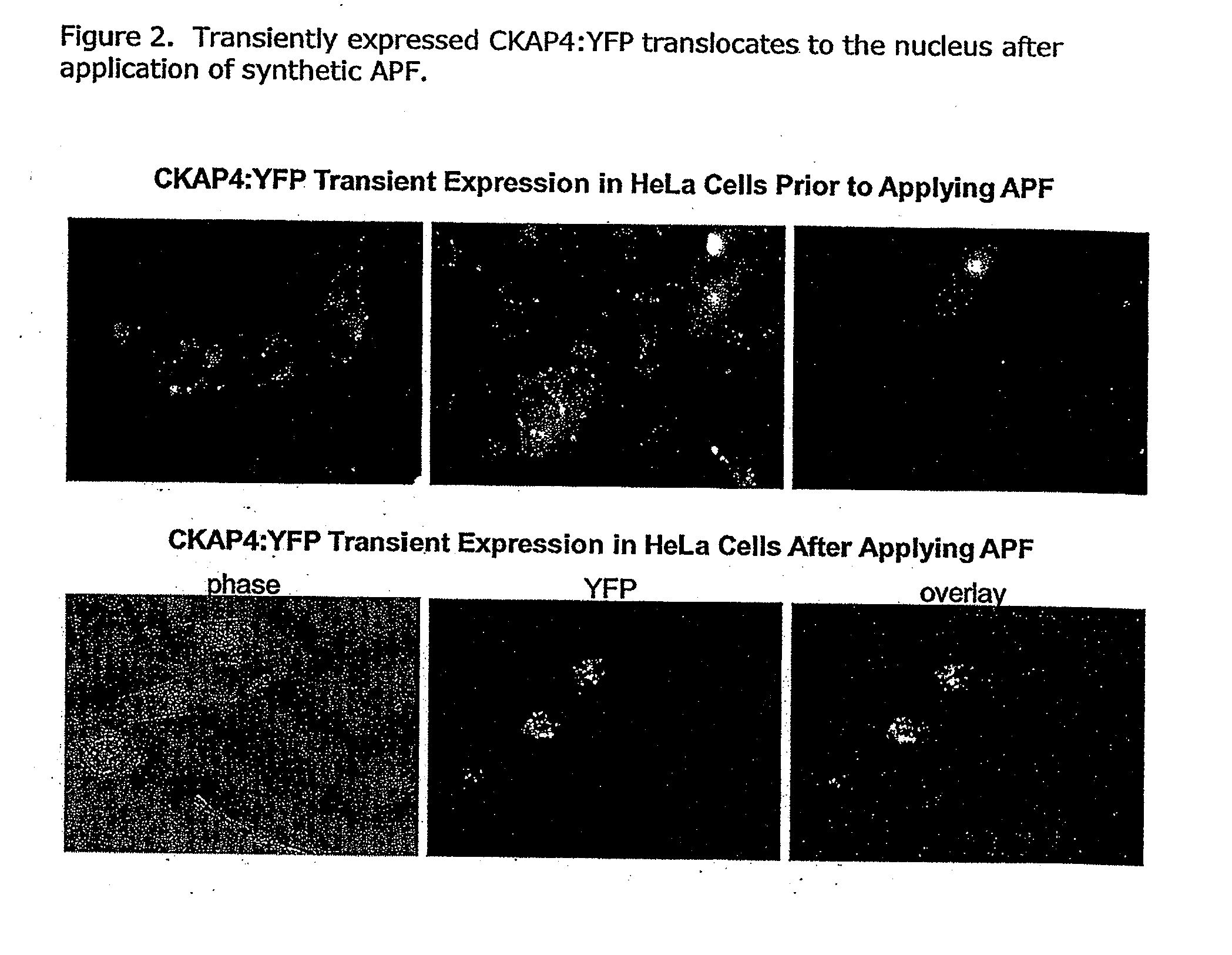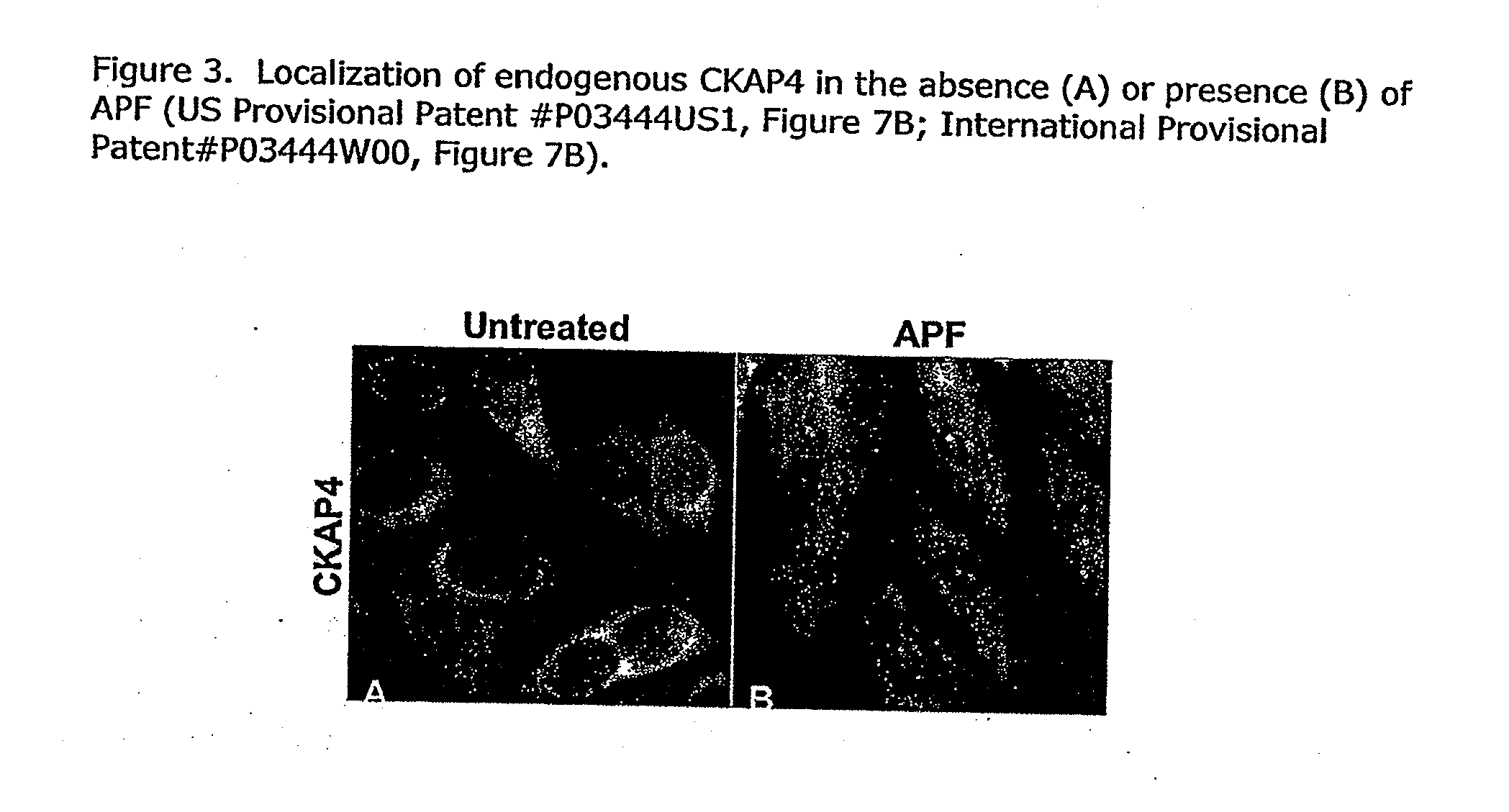Cell-based detection of apf through its interaction with ckap4 for diagnosis of interstitial cystitis
a technology of interstitial cystitis and cell-based detection, which is applied in the field of assay system, can solve the problems of affecting the quality of life of patients, unable to explain why, and most surgeons are reluctant to operate, and achieve the effect of reducing the binding level of ap
- Summary
- Abstract
- Description
- Claims
- Application Information
AI Technical Summary
Benefits of technology
Problems solved by technology
Method used
Image
Examples
examples
[0297]Example 1. The fluorescent reporter CKAP4-YFP was composed of the following DNA elements: CKAP4 was cloned by reverse transcription from a HeLa cell cDNA library (see FIG. 1). The 5′ primer incorporated a kpnI site and the 3′ primer an XhoI site in order to facilitate cloning. YFP was amplified by PCR from a plasmid containing the coding sequence for YFP. To aid in cloning the 5′ primer for YFP included an XhoI site and the 3′ primer an EcoRI site. The XhoI endonuclease sites, one at the 3′ end of CKAP4 and the other at the 5′ end of YFP resulted in an in-frame fusion of CKAP4 to YFP. Both of these cDNA fragments were ligated into pcDNA3 that was linearized with KpnI and EcoRI. Translation of the mRNA generated from this expression construct began at the start codon of CKAP4 and ended at the stop codon of YPF.
[0298]HeLa cells (ATCC# CCL-2), (SCHERER W F, SYVERTON J T, GEY G O. Studies on the propagation in vitro of poliomyelitis viruses. IV. Viral multiplication in a stable strai
PUM
| Property | Measurement | Unit |
|---|---|---|
| Time | aaaaa | aaaaa |
| Angle | aaaaa | aaaaa |
| Conformation | aaaaa | aaaaa |
Abstract
Description
Claims
Application Information
 Login to view more
Login to view more - R&D Engineer
- R&D Manager
- IP Professional
- Industry Leading Data Capabilities
- Powerful AI technology
- Patent DNA Extraction
Browse by: Latest US Patents, China's latest patents, Technical Efficacy Thesaurus, Application Domain, Technology Topic.
© 2024 PatSnap. All rights reserved.Legal|Privacy policy|Modern Slavery Act Transparency Statement|Sitemap



